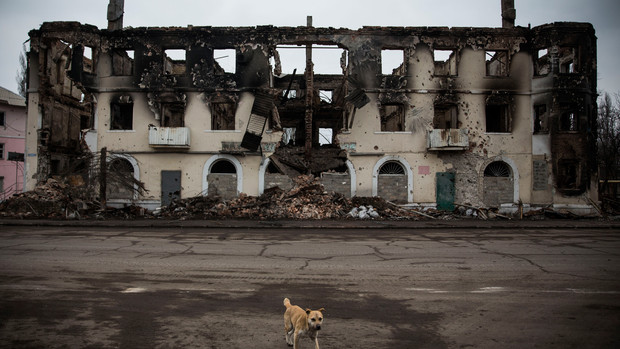Ukraine's next battle will be rescuing a war-torn economy: view

By Bloomberg View
Even as it struggles to maintain a fragile peace along its eastern border, Ukraine's government must tackle another problem: rescuing its economy. This is going to take an epic debt-relief deal that may prove no less challenging than containing the Russia-backed insurgency. But there is a way to make it work.
A brutal combination of war and currency devaluation has pushed Ukraine to the brink of insolvency. Its debts, denominated largely in dollars, hover around 100 percent of gross domestic product, up from about 40 percent a year ago and well above the 70 percent level that the International Monetary Fund considers excessive for an emerging-market country. Principal and interest due over the next three years exceed $27 billion, equivalent to more than a quarter of government expenditure.
Only swift and radical debt relief can help the country out of its economic quagmire. Output has been plummeting, down 15 percent in the fourth quarter of 2014 from a year earlier. If the government tries to cut spending or raise taxes enough to pay its debts, it will all but guarantee collapse. This awful scenario -- a complete write-off -- is what creditors will have to consider as their best alternative to a negotiated agreement.
Reaching a deal won't be easy. The first obstacle is Russia. In late 2013, President Vladimir Putin lent $3 billion to support Viktor Yanukovich, the much-hated Ukrainian leader who fled during the Maidan revolution. And when the debt comes due in December, Putin expects to be paid in full.
As the instigator of the Ukrainian conflict, Russia has only a weak moral argument for getting paid. Unfortunately, it has an airtight economic and military case -- which rests on its crucial natural gas supplies to Ukraine and its ability to rekindle the conflict there. Ukraine might have no choice but to pay up.
A second obstacle is lasting uncertainty about Ukraine's economic prospects. The country's private creditors, among the largest of which is U.S. asset manager Franklin Templeton, have no way to assess what portion of its debts the government can actually pay. Early indications are that Ukraine's new leaders may be no less corrupt than their predecessors. The country lacks the stability and trust required for a comprehensive and final debt-relief deal.
Hence, the best solution would be a two-step process. First, the government's private creditors would agree to a several-year moratorium on debt payments, covering the period of the $17.5 billion lending program that the IMF is considering for Ukraine. This would give Ukraine's leaders the time and resources they need to right the economy and build a track record of sound financial management. Then, assuming the country emerges intact, all sides would be in a better position to assess the government's ability to pay and reach a conclusive deal.
For this to work, the IMF and the Western nations offering financial support would have to be extraordinarily pragmatic, flexible and vigilant. They would have to watch a big chunk of their money go out the door to pay off Russia. They would have to allow Ukraine's government to provide economic stimulus, which could involve running budget deficits inconsistent with stabilizing its debt burden. They would have to demand transparency and closely monitor government expenditures, ensuring that the money isn't stolen.
Such a plan could go wrong in many different ways. But if Ukraine is to stand a chance of recovery, it’s the best path forward.
